 W
WAnonymous works are works, such as art or literature, that have an anonymous, undisclosed, or unknown creator or author. In the case of very old works, the author's name may simply be lost over the course of history and time. There are a number of reasons anonymous works arise.
 W
WThe Church of Spiritual Technology (CST) is a California 501(c)(3) non-profit corporation, incorporated in 1982, which owns all the copyrights of the estate of L. Ron Hubbard and licenses their use. CST does business as L. Ron Hubbard Library.
 W
WClean Tech Law contemplates a diverse set of legal and policy issues related to the development and commercialization of clean technology. These issues range from conventional natural resources law to cutting-edge intellectual property issues related to synthetic genomics and advanced materials. Clean tech law could also address issues and conflicts surrounding the placement of such technologies.
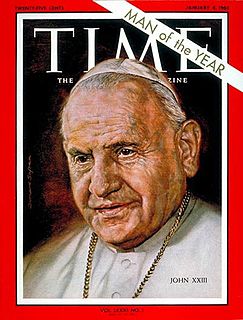 W
WA collective work is a work that contains the works of several authors assembled and published under the direction of one natural or legal person who owns the copyright in the work as a whole. Definitions vary considerably from one country to another, but usually treat ownership of the work as a whole as distinct from ownership of the individual contributions, so the individual authors may retain the right to publish their work elsewhere. It is common for publication of articles on the Internet, when isolated from the context of the overall work, to be considered to be outside of the standard agreement between the author and the owner of the collective work.
 W
WA collective work under the copyright law of France is a collective work that contains the works of several authors created, assembled, harmonized and published under the direction of a person or organization who owns the commercial and moral rights of the work as a whole. The work as a whole is distinct from the individual contributions, which are owned by the authors. It is common for publication of articles on the Internet, in a different context and layout from the printed work, to be considered to be outside the standard agreement between the author and the owner of the collective work.
 W
WA collective work in the Copyright law of the United States is a work that contains the works of several authors assembled and published into a collective whole. The owner of the work has the property rights in the collective work, but the authors of the individual works may retain rights in their contributions. Electronic reproduction of the whole work is allowed, but electronic reproduction of the individual works on their own, outside the context of the work as a whole, may constitute an infringement of copyright.
 W
WThe Copyright Clause describes an enumerated power listed in the United States Constitution.
 W
WThe copyright term is the length of time copyright subsists in a work before it passes into the public domain. In most of the world, this length of time is the life of the author plus either 50 or 70 years.
 W
WA Creative Commons (CC) license is one of several public copyright licenses that enable the free distribution of an otherwise copyrighted "work". A CC license is used when an author wants to give other people the right to share, use, and build upon a work that they have created. CC provides an author flexibility and protects the people who use or redistribute an author's work from concerns of copyright infringement as long as they abide by the conditions that are specified in the license by which the author distributes the work.
 W
WIntellectual property (IP) is a category of property that includes intangible creations of the human intellect. There are many types of intellectual property, and some countries recognize more than others. The most well-known types are copyrights, patents, trademarks, and trade secrets. The modern concept of intellectual property developed in England in the 17th and 18th centuries. The term "intellectual property" began to be used in the 19th century, though it was not until the late 20th century that intellectual property became commonplace in the majority of the world's legal systems.
 W
WDesign is a form of intellectual property right concerned with the visual appearance of articles which have commercial or industrial use. The visual form of the product is what is protected rather than the product itself. The visual features protected are the shape, configuration, pattern or ornamentation. A design infringement is where a person infringes a registered design during the period of registration. The definition of a design infringement differs in each jurisdiction but typically encompasses the purported use and make of the design, as well as if the design is imported or sold during registration. To understand if a person has infringed the monopoly of the registered design, the design is assessed under each jurisdiction's provisions. The infringement is of the visual appearance of the manufactured product rather than the function of the product, which is covered under patents. Often infringement decisions are more focused on the similarities between the two designs, rather than the differences.
 W
WIntellectual property refers to an intangible property right which is enjoyed by law after the engagement in intellectual creative conducts, which cover a range of intangible property rights: patent, copyrights, trademark, design right and an indication of the original. Europe Union regulates the range of the law, including three different interdependent serious legislation, primary and secondary legislation, and law in cases. The empty area regulated by individual national members is not in the coverage of EU law. Based on the EU treaties, EU members each have the right to transfer and implement the discretion of EU law. Therefore, compared to conducting the application to the separate countries in EU it harbors more advantages to apply for the European patent office when seeking to obtain more extensive patent protection. That is to say, at each signatory of the Convention of European Patent, the holder who are granted the patent is given the equivalent right to the national patent of the countries.
 W
WINID is an acronym for Internationally agreed Numbers for the Identification of (bibliographic) Data. INID codes are used by patent offices worldwide for indicating specific bibliographic data items on the title pages of patents and patent application publications. INID codes use Arabic numerals, and so are language-independent. For example, number (30) indicates priority data, and (51) technical area according to the International Patent Classification (IPC).
 W
WIntellectual property (IP) is a category of property that includes intangible creations of the human intellect. There are many types of intellectual property, and some countries recognize more than others. The most well-known types are copyrights, patents, trademarks, and trade secrets. The modern concept of intellectual property developed in England in the 17th and 18th centuries. The term "intellectual property" began to be used in the 19th century, though it was not until the late 20th century that intellectual property became commonplace in the majority of the world's legal systems.
 W
WIntellectual property (IP) is a category of property that includes intangible creations of the human intellect. There are many types of intellectual property, and some countries recognize more than others. The most well-known types are copyrights, patents, trademarks, and trade secrets. The modern concept of intellectual property developed in England in the 17th and 18th centuries. The term "intellectual property" began to be used in the 19th century, though it was not until the late 20th century that intellectual property became commonplace in the majority of the world's legal systems.
 W
WiRunway is a boutique technology, finance and litigation consulting firm with primary expertise in intellectual property. It specializes in patent litigation, patent valuation, damages, patent portfolio management and technology due diligence advisory to both law firms and corporations. The company has offices in Austin, Texas; Palo Alto, California; Denver, Colorado and Bangalore, India.
 W
WKorean Open Access License is a copyleft license developed by IPLeft in South Korea based on South Korean law, which enable authors to give different kind of permission to others.
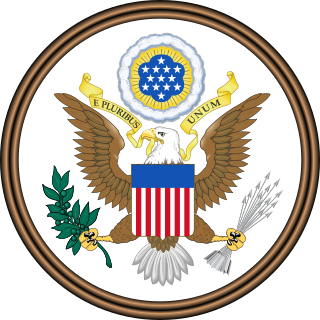 W
WThe Lanham (Trademark) Act (Pub.L. 79–489, 60 Stat. 427, enacted July 5, 1946, codified at 15 U.S.C. § 1051 et seq. is the primary federal trademark statute of law in the United States. The Act prohibits a number of activities, including trademark infringement, trademark dilution, and false advertising.
 W
WLexInnova Technologies, LLC, is a legal services and technology consulting company headquartered in Houston, Texas. It specializes in providing patent litigation consulting, patent analytics, eDiscovery, legal due diligence, license management, intellectual property advisory, and technology consulting services to law firms and corporations. The company also has offices at Cupertino, California; Houston, Texas and Gurgaon, India.
 W
WThe Max Planck Institute for Innovation and Competition is a Munich, Germany, based research institute, which is part of the Max Planck Society for the Advancement of Science, which manages 84 institutes and research institutions. The institute was formerly known as Max Planck Institute for Intellectual Property and Competition Law and the name was changed to Max Planck Institute for Innovation and Competition in view of the broader focus of the institute and its interdisciplinary character. The major research areas of the institute are intellectual property, innovation and competition. Apart from providing research support for scholars from across the world, the institute also publishes the International Review of Intellectual Property and Competition Law (IIC).
 W
WMicrosoft Corp. v. Shah was an Anticybersquatting Consumer Protection Act (ACPA) case heard before the United States District Court for the Western District of Washington. Microsoft sued the defendants, Amish Shah and others, for, among other charges, contributory cybersquatting for encouraging others, through videos and software, to infringe on Microsoft's trademarks. The case was settled out of court in July 2011 after judge Ricardo S. Martinez denied Shah's motion for dismissal. Legal observers suggested that, if upheld, the case would prove notable for the court's expansion of the ACPA liability to include contributory cybersquatting.
 W
WFrancis Fabien Michel Muguet (1955–2009) was a French chemist who advocated open access to information.
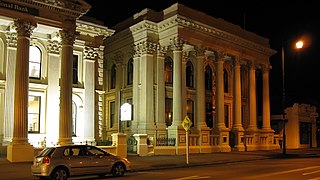 W
WA non-disclosure agreement (NDA), also known as a confidentiality agreement (CA), confidential disclosure agreement (CDA), proprietary information agreement (PIA) or secrecy agreement (SA), is a legal contract or part of a contract between at least two parties that outlines confidential material, knowledge, or information that the parties wish to share with one another for certain purposes, but wish to restrict access to. Doctor–patient confidentiality, attorney–client privilege, priest–penitent privilege and bank–client confidentiality agreements are examples of NDAs, which are often not enshrined in a written contract between the parties.
 W
WOpen knowledge is knowledge that is free to use, reuse, and redistribute without legal, social or technological restriction. Open knowledge organisations and activists have proposed principles and methodologies related to the production and distribution of knowledge in an open manner. Knowledge is interpreted broadly to include data, content, and both general and scientific information.
 W
WThe open-core model is a business model for the monetization of commercially produced open-source software. Coined by Andrew Lampitt in 2008, the open-core model primarily involves offering a "core" or feature-limited version of a software product as free and open-source software, while offering "commercial" versions or add-ons as proprietary software.
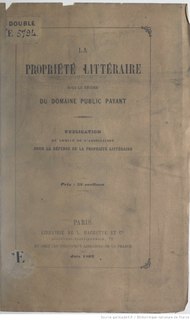 W
WPaying public domain is a copyright regime where copies, presentations or performances of a work that has entered the public domain are still subject to royalties, which are payable to the state or to an authors' association. The principle is that revenue from the work of long-dead artists should be used to support creativity of living artists. It may apply only to certain types of work, such as folklore or traditional cultural expressions. However, communities that wish to control their traditional knowledge or cultural expressions may perceive the royalties as an unwelcome tax. Paying public domain regimes have been introduced and withdrawn in several countries. They are still in place in several countries in South America and Africa.
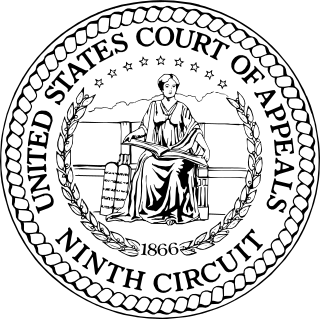 W
WPharrell Willams et al. v Bridgeport Music et al., No. 15-56880 is a United States Court of Appeals for the Ninth Circuit case concerning Copyright Infringement of Sound Recording. In August 2013, Pharrell Williams, Robin Thicke and Clifford Joseph Harris filed a complaint for declaratory relief against the members of Marvin Gaye's family and Bridgeport Music in the United States district court for the Central District of California; that the song Blurred Lines did not infringe the copyright of defendants in Got To Give It Up and Sexy Ways respectively.
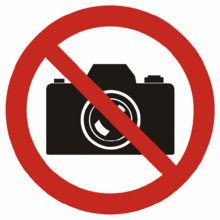 W
WThe intellectual property rights on photographs are protected in different jurisdictions by the laws governing copyright and moral rights. In some cases photography may be restricted by civil or criminal law. Publishing certain photographs can be restricted by privacy or other laws. Photography can be generally restricted in the interests of public morality and the protection of children.
 W
WPlagiarism is the representation of another author's language, thoughts, ideas, or expressions as one's own original work. In educational contexts, there are differing definitions of plagiarism depending on the institution. Prominent scholars of plagiarism include Rebecca Moore Howard, Susan Blum, Tracey Bretag, and Sarah Elaine Eaton, among others.
 W
WPlain tobacco packaging, also known as generic, neutral, standardised or homogeneous packaging, is packaging of tobacco products, typically cigarettes, without any branding, including only the brand name in a mandated size, font and place on the pack, in addition to the health warnings and any other legally mandated information such as toxic constituents and tax-paid stamps. The appearance of all tobacco packs is standardised, including the colour of the pack.
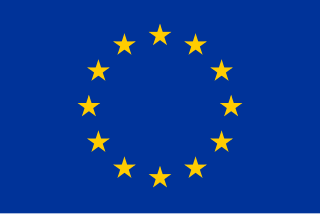 W
WThe European Union (EU) directive on criminal measures aimed at ensuring the enforcement of intellectual property rights (2005/0127/COD) was a proposal from the European Commission for a directive aimed "to supplement Directive 2004/48/EC of 29 April 2004 on the enforcement of intellectual property rights ". The directive was proposed on July 12, 2005 by the Commission of the European Communities.
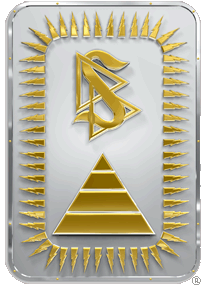 W
WThe Religious Technology Center (RTC) is an American non-profit corporation that was founded in 1982 by the Church of Scientology to control and oversee the use of all of the trademarks, symbols and texts of Scientology and Dianetics. Although RTC controls their use, those works are owned by another corporation, the Church of Spiritual Technology which is doing business as L. Ron Hubbard Library, registered in Los Angeles County, California.
 W
WIn computing, and specifically peer-to-peer file sharing, seeding is the uploading of already downloaded content for others to download from. A peer, a computer that is connected to the network, becomes a seed when having acquired the entire set of data, it begins to offer its upload bandwidth to other peers attempting to download the file. This data consists of small parts so that seeds can effectively share their content with other peers, handing out the missing pieces. A peer deliberately chooses to become a seed by leaving the upload task active once the content has downloaded. The motivation to seed is mainly to keep the file being shared in circulation and a desire to not act as a parasite. The opposite of a seed is a leech, a peer that downloads more than they upload.
 W
WA service mark or servicemark is a trademark used in the United States and several other countries to identify a service rather than a product.
 W
WThe Special 301 Report is prepared annually by the Office of the United States Trade Representative (USTR) that identifies trade barriers to United States companies and products due to the intellectual property laws, such as copyright, patents and trademarks, in other countries. By April 30 of each year, the USTR must identify countries which do not provide "adequate and effective" protection of intellectual property rights or "fair and equitable market access to United States persons that rely upon intellectual property rights".
 W
WSweat of the brow is an intellectual property law doctrine, chiefly related to copyright law. According to this doctrine, an author gains rights through simple diligence during the creation of a work, such as a database, or a directory. Substantial creativity or "originality" is not required.
 W
WA trademark is a type of intellectual property consisting of a recognizable sign, design, or expression which identifies products or services of a particular source from those of others, although trademarks used to identify services are usually called service marks. The trademark owner can be an individual, business organization, or any legal entity. A trademark may be located on a package, a label, a voucher, or on the product itself. For the sake of corporate identity, trademarks are often displayed on company buildings. It is legally recognized as a type of intellectual property.
 W
WWIPO Lex is an online database of national legislation and international treaties in the field of intellectual property. Maintenance and development of the database is exercised by the World Intellectual Property Organization.
 W
WWorld Intellectual Property Day is observed annually on 26 April. The event was established by the World Intellectual Property Organization (WIPO) in 2000 to "raise awareness of how patents, copyright, trademarks and designs impact on daily life" and "to celebrate creativity, and the contribution made by creators and innovators to the development of societies across the globe". 26 April was chosen as the date for World Intellectual Property Day because it coincides with the date on which the Convention Establishing the World Intellectual Property Organization entered into force in 1970.
 W
WZeniMax v. Oculus is a civil lawsuit filed by ZeniMax Media against Oculus VR on charges of theft of intellectual property relating to Oculus' virtual reality device, the Oculus Rift. The matter was settled with a private out-of-court agreement by December 2018.